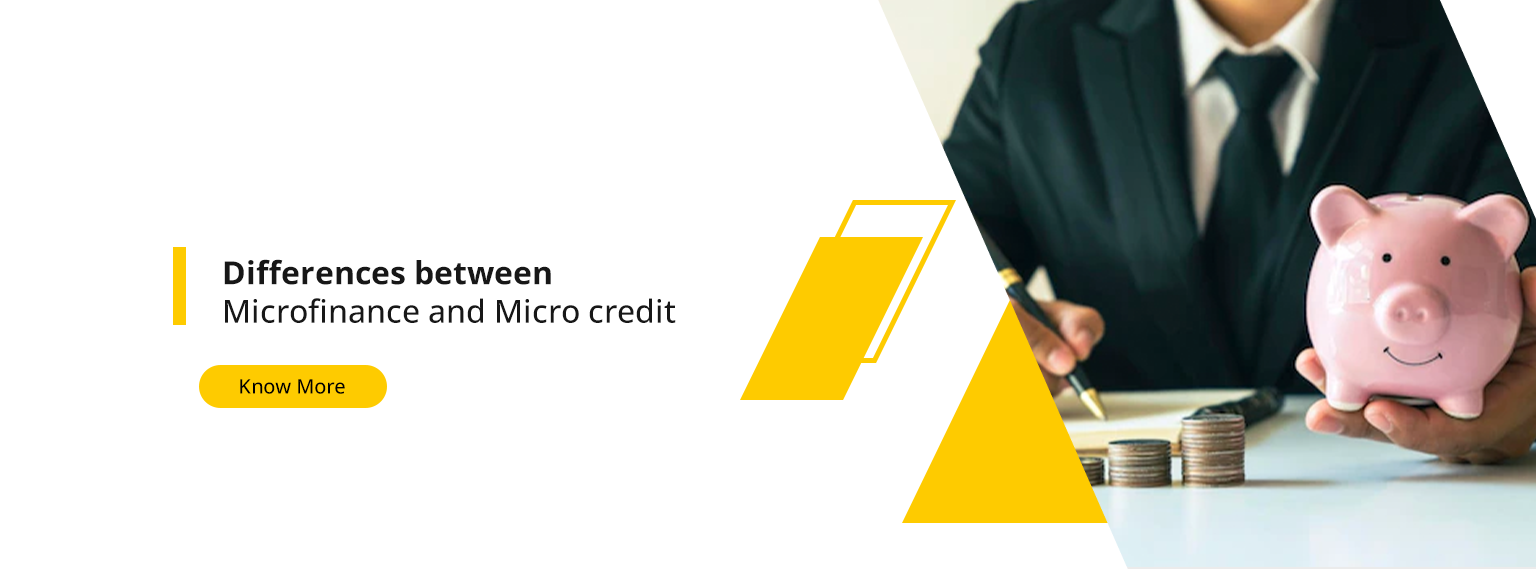Microfinance refers to financial services provided to individuals who have low incomes. Micro credit is a term used to describe small loans given to people who do not qualify for traditional banking institutions. These loans are often used for business purposes, such as starting a small business. Both terms have been used interchangeably, but they mean different things.
Microfinance was first introduced in the 1970s, while micro credit was developed in the 1980s. Both terms refer to the same concept, but they differ in how they are defined. In general, microfinance’s feature focuses on providing financial services to those considered poor, while microcredit emphasizes the need for economic empowerment.
The programme is offered to those living below the poverty line who lack collateral, have no access to basic financial services, and are not qualified to apply for a loan in the conventional sense. People often use the phrases interchangeably since microcredit is a financial service offered in the context of microfinance.
Read the following article to learn more about the differences between microcredit and microfinance.
What are The Differences Between Microfinance and Microcredit
- Microfinance covers a wide range of financial services offered to low-income individuals who cannot use traditional banking and related services. No matter where they live, severely poor people can access the service. Raising low-class people’s incomes and giving them access to savings accounts and loans are the goals of microfinance. Customers may include women, farmers, retirees, and others. In a nutshell, microfinance is often used to improve the lives of impoverished communities.
- Moreover, microfinance is a game-changer for the economy of any nation. It enables the underprivileged to meet their basic needs and safeguards them from danger. The income per person increases as a result of granting short-term financial aid. It also promotes gender equality and supports women’s empowerment.
- Whereas, the smallest form of credit offered to those in need with very little earning potential is known as microcredit. Borrowers with poor credit histories, no collateral, and no employment are given loans. The loan is given chiefly to persons who need financial assistance to support themselves, particularly to women who can open their businesses and achieve financial independence.
- Microcredit refers to a small loan given to those living in poverty at a low-interest rate to assist them to become self-employed, that is, to support small- and medium-sized businesses in launching their businesses.
- Microfinance and micro credit are both forms of microfinancing. Instead, microfinance helps people manage their finances and pay for everyday expenses and includes credit and non-credit activities, while microcredit includes only credit activities.
Are Microfinance and Micro insurance the Same?
Microfinance is different from micro insurance because micro insurance covers only catastrophic events. If someone loses his house in a fire, he would receive money to rebuild his home. On the other hand, if someone loses her job, she would receive money to help her find another one.
Conclusion
As the impoverished individuals don’t have access to such resources as microcredit or microfinance, the only way they can get the funds they need is by borrowing them from money lenders, who charge the impoverished people inhuman rates, since they are ineligible for bank financing due to unavailability of assets or security. When a newbie wants to launch a business but is unable to use banking services, the development of microfinance or microcredit has a beneficial impact.



